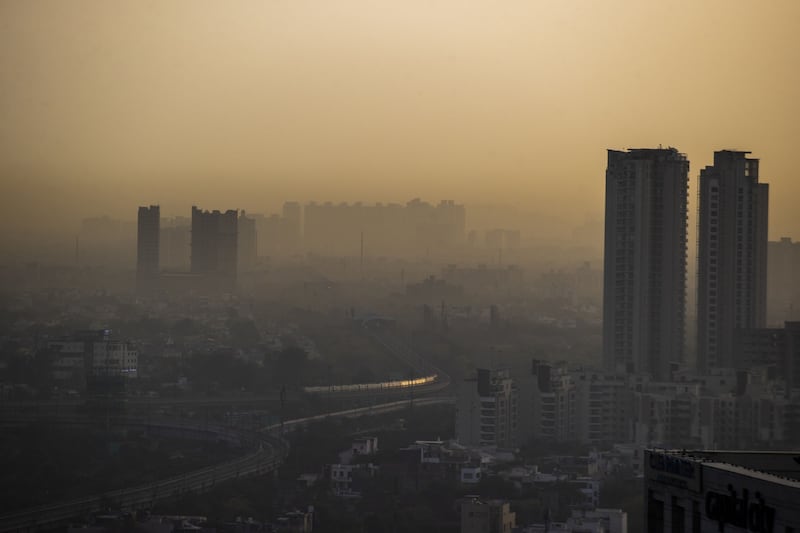India has surpassed China as the world’s most populous country, according to new UN data, marking a historic crossover moment for the two Asian rivals that are set to shape business and world affairs in years to come.
According to the UN Population Fund’s World Population Dashboard, released on Wednesday, India’s population has surpassed 1.428bn, just overtaking China’s more than 1.425bn people.
The update in population estimates came as the world body’s main agency that tracks demographic trends, the UNFPA, released its annual State of World Population Report, which warned of growing “population anxieties” as the world’s total number of inhabitants surpassed 8bn.
The UN had already indicated that India’s population was on track to overtake China’s, a function of both falling Chinese fertility rates and continuing population growth in India.
Russia regains influence in its ‘near abroad’ as West wraps itself in red lines
‘They just want us to work and have babies.’ Exasperation in China as Halloween falls foul of authorities
Tories shout ‘we told you so’ after Rachel Reeves’ tax-and-spend Labour budget
How Trump allies could challenge US presidential election result
Population growth is a politically sensitive topic in China and India, and both their governments were subdued in their responses to the demographic milestone.
“I want to tell you that population dividends don’t only depend on quantity but also on quality,” Chinese foreign ministry spokesman Wang Wenbin said in Beijing on Wednesday. “Our population dividend has not disappeared, our dividend is forming, and the impetus for development is strong.”
India’s external affairs ministry spokesperson had no immediate comment.
China’s population fell in 2022 for the first time in 60 years, as deaths outstripped births and left the overall headcount at 1.41bn, according to Beijing’s calculations.
China’s birth rate has been in long-term decline in part due to the successful implementation of the One-Child Policy in 1980, which limited the number of children a couple could have to below the average of 2.1 needed for a country’s population to remain stable, or “replacement rate”. The authorities has eased this policy but the number of births in China has continued to fall.

Peng Xizhe, professor of population and development at Fudan University, said the inflection point had come slightly earlier than Chinese demographers’ original forecasts of around 2025 as policies launched by Beijing to increase childbirth failed to slow the decline. While the declines had their origins in the One Child Policy, today the downward trend was related more closely to a greater increase in opportunities for younger people, particularly in higher education.
This had “resulted in later marriage and childbearing and a relatively higher proportion of the population wanting to remain single”, said Prof Peng.
India’s population growth rate peaked at 2.4 per cent in the 1980s and had dropped to 1 per cent by 2020, and the population in 31 of its 36 states is now either at replacement rate or in decline, a UN official said. However, higher fertility rates in the remaining five states mean its overall population continues to grow, and experts predict it will peak sometime around the middle of this century.
“India will face a situation of population momentum for the next two to three decades before the decline in the overall population,” Andrea Wojnar, representative of the UNFPA in India, said.
Some analysts have predicted that population growth could deliver economic dividends for India, if it manages to harness the talents and skills of a growing and relatively young workforce.
India increasingly has China in its sights as it looks to profit from the reorientation of supply chains away from China after the disruptions of the Covid-19 pandemic and rise in geopolitical friction around the war in Ukraine. The country last year surpassed the UK to become the world’s fifth-largest economy.
However, India lags behind China on everything from the size of its economy to foreign direct investment, its own investment in infrastructure, and military spending.
India has struggled to create enough jobs for the millions of young people entering its labour force every year. Unemployment has been climbing despite the country’s status as the world’s fastest-growing large economy this year, posing a challenge to Narendra Modi’s government as it prepares to seek a third term in office in an election next year.
“India must utilise the window of opportunity for the demographic dividend that is currently available, but will not be able to if the pace of investment is slow,” said Poonam Muttreja, executive director of the Population Foundation of India. “This means that India will have to work at a faster pace and invest in people — especially the young.”
India has not conducted a census since 2011. However, the government of India releases official population projections at the national and state level, using the base data from the 2011 census, the UN’s Wojnar said, and this gave a “good approximation of the total population and its age-sex structure”. - The Financial Times Limited




